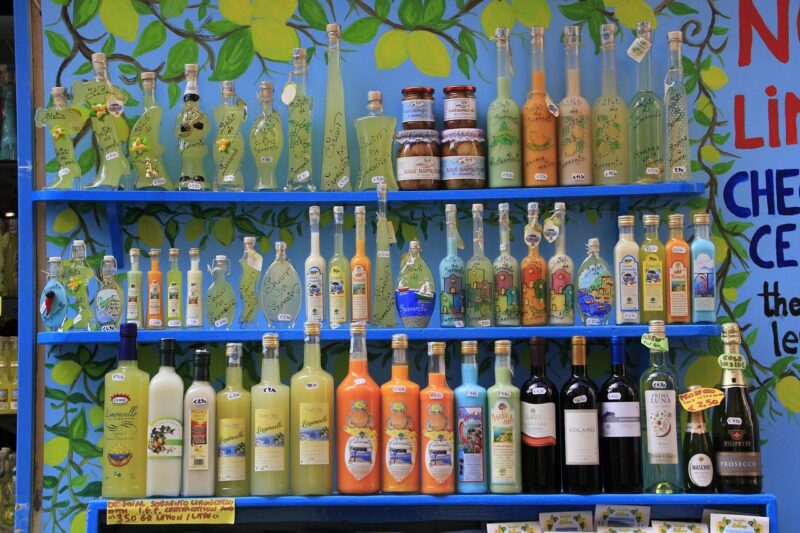In a blog about the Amalfi Coast I can not tell you about limoncello, his typical liqueur. I’ll tell you how it is made and some curiosities.
Limoncello is produced from lemon zest , not just any one, but the “Limone Costa D‘Amalfi”, the name with which it has been recognized IGP, but more commonly called “Sfusato Amalfitano”.
I talk about it here: Sfusato Amalfitano: the lemon of the Amalfi Coast
The Sfusato Amalfitano, in fact, unlike the other varieties of lemons, has a very thick, colored skin light yellow, with a particularly intense aroma. These characteristics are given precisely by the high presence of terpenes, essential for the production of liqueur. The alcohol content of the peels is around 20% and 32% vol.
In order to produce it, the peels are macerated in pure alcohol, adding water and sugar. Everything then rests in the bottles for about a month in a cool and dark place. If you prefer, you can also turn it into a great one limoncello cream, simply adding milk or cream.
Limoncello, in addition to being tasted as a digestive, is used to wet some desserts, including Babà. I talked about it in this article: The Babbà with two “b”.
On his origins, one can think that, given the large production of lemon on the Amalfi Coast, it was a homemade invention. If you happen to try this type of lemon, peeling it, you will realize that its peel, so clear and sweet, will not be thrown away easily. Perhaps this is why it was decided to reuse it to produce what would become the most famous liqueur in the world. It has become so popular, there are so many legends that tell about his birth. But, in my opinion, its story is very simple: try to peel a Sfusato Amalfitano lemon and you will understand that man could not help thinking how to use something so good not to throw away even a little. After all, limoncello also tells one history of sustainability, in which a “waste” can represent a resource.

